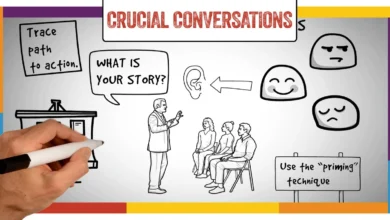Thinking Fast and Slow PDF: A Deep Dive Into Daniel Kahneman’s Masterpiece

In the world of psychology and behavioral economics, Daniel Kahneman’s Thinking Fast and Slow PD stands as one of the most impactful works. The book, which was published in 2011, sheds light on the dual systems of thought that guide human behavior and decision-making. It introduces readers to two distinct ways of thinking: System 1, which is fast, intuitive, and automatic, and System 2, which is slow, deliberate, and logical. For those interested in understanding how our minds work in terms of decision-making, judgment, and problem-solving, Thinking Fast and Slow PD is indispensable.
In this article, we explore the key concepts, lessons, and insights from the book and why it remains a significant text in the fields of psychology, economics, and personal development. For those looking for a comprehensive exploration, the “Thinking Fast and Slow PDF” serves as a valuable resource to fully grasp the depth of Kahneman’s work.
Understanding the Dual Thinking Fast and Slow PDF
One of the most important ideas presented in Thinking Fast and Slow PDF is the concept of two systems of thought, which Daniel Kahneman describes as System 1 and System 2. These two systems represent the way our minds work in different circumstances and dictate how we process information.
System 1: Fast, Automatic, and Intuitive Thinking
System 1 is responsible for the fast, automatic decisions that we make without conscious effort. It’s the mental process that helps us navigate through daily life without having to think too much. This system is intuitive, and emotional, and often operates on heuristics—mental shortcuts that simplify decision-making. For instance, if you recognize a friend’s face in a crowd, System 1 kicks in to quickly make that identification without any conscious effort or analysis.
While this system is incredibly efficient and effective for quick decisions, it can also lead to errors. System 1 relies heavily on biases, and its decisions can sometimes be faulty, especially when we are faced with complex or unfamiliar situations. Kahneman explores these biases in-depth, explaining how they can impact our judgment in both personal and professional contexts.
System 2: Slow, Deliberate, and Analytical Thinking
In contrast to System 1, System 2 is the part of our brain that engages in slow, deliberate, and logical Thinking Fast and Slow PDF. This system comes into play when we need to solve problems, think critically, or process complex information. When we perform tasks that require concentration, such as solving a math problem or analyzing a difficult situation, we engage System 2.
Although System 2 is essential for more accurate and reflective Thinking Fast and Slow PDF, it is also resource-intensive and requires more cognitive effort. It’s not something we use constantly because it demands mental energy. System 2 is slower, but it is more rational and less prone to the biases and heuristics that affect System 1.
The Importance of Cognitive Biases in Decision-Making

One of the central themes in Thinking Fast and Slow PDF: A Deep Dive Into Daniel Kahneman’s Masterpiece is how cognitive biases—systematic patterns of deviation from norm or rationality in judgment—affect our decisions. Kahneman goes into great detail about how these biases shape the way we think, often leading to faulty judgments and decisions.
Anchoring Bias: The Power of First Impressions
Anchoring is a cognitive bias where people rely too heavily on the first piece of information they receive (the “anchor”) when making decisions. Kahneman explains that when we are presented with an initial reference point, even if it’s irrelevant or arbitrary, it influences subsequent decisions. For example, if you’re negotiating the price of a car and the initial price is set very high, you may anchor your expectations to that figure, even if the car is worth much less.
The anchoring bias can be seen in various aspects of daily life, from retail pricing to political decision-making. Kahneman’s analysis of how this bias operates helps readers become more aware of its subtle but powerful influence on their judgments.
Availability Heuristic: Making Decisions Based on Information Readily Available
Another bias that Kahneman highlights is the availability heuristic, which is when people make judgments based on the information that is most readily available to them. This is particularly evident in media consumption, where sensationalized stories or vivid memories may distort our perception of reality.
For instance, if we constantly hear about airplane crashes in the news, we may develop an exaggerated fear of flying, even though statistically, air travel is much safer than driving. Kahneman explains that the availability heuristic leads us to overestimate the likelihood of dramatic events, and this influences our decision-making processes in ways we may not even realize.
The Role of Heuristics in Everyday Decisions
Heuristics, as Kahneman explains, are mental shortcuts that allow people to make decisions quickly and efficiently. While heuristics are beneficial in many everyday situations, they can also lead to errors in judgment. Kahneman delves into several types of heuristics, exploring how they shape our Thinking Fast and Slow PDF, often without us being fully aware of their influence.
Representativeness Heuristic: Judging Based on Stereotypes
The representativeness heuristic is another mental shortcut where we judge the probability of an event based on how much it resembles a prototype. This can help us make quick decisions, but it often leads us to rely on stereotypes or assumptions rather than facts.
For example, when meeting someone new, we might automatically assume their behavior is consistent with a stereotype we hold about their group, even though that might not be the case. Kahneman highlights the flaws in this Thinking Fast and Slow PDF and encourages readers to be more mindful of how our assumptions shape our judgments.
Affect Heuristic: Letting Emotions Guide Our Decisions
The affect heuristic involves making decisions based on emotions or feelings rather than a logical analysis of the situation. Kahneman explains that we often rely on our emotional responses to guide us, whether we are choosing a product, deciding on a job, or even selecting a political candidate. This emotional decision-making can be powerful but also misleading, leading us to choices that aren’t grounded in rational thought.
In many cases, our feelings about a particular option will heavily influence our final decision, even if we don’t consciously acknowledge it. This is why advertisements often aim to invoke strong emotional responses—they leverage the affect heuristic to encourage purchasing decisions.
The Impact of Thinking Fast and Slow PDF on Behavioral Economics
Daniel Kahneman’s Thinking Fast and Slow PD has had a profound impact on the field of behavioral economics, which seeks to understand the psychological factors that influence economic decisions. Kahneman, along with his collaborator Amos Tversky, is considered one of the pioneers of this field. Through his research, Kahneman demonstrates that humans are not always rational decision-makers, and their choices are often influenced by cognitive biases and heuristics.
Kahneman’s work challenges traditional economic theory, which assumes that people make decisions based on logic and self-interest. By showing how emotions, biases, and irrational Thinking Fast and Slow PDFaffect financial decisions, Kahneman’s ideas have revolutionized the way economists and policymakers approach economic models and strategies.
How Thinking Fast and Slow PDF Can Improve Personal Decision-Making
Kahneman’s book is not just for academics; it has practical implications for everyone looking to improve their decision-making skills. By understanding the two systems of thought and recognizing the biases that influence our choices, individuals can make more informed and rational decisions in their everyday lives.
For instance, understanding when you’re relying on System 1’s quick, automatic Thinking Fast and Slow PDFcan help you pause and engage System 2 for a more thoughtful decision. Recognizing the availability heuristic or the anchoring bias can help you make decisions based on accurate information rather than faulty judgments.
Kahneman encourages readers to reflect on their decision-making processes and be aware of the traps that their minds might fall into. By becoming more aware of cognitive biases and how they work, people can enhance their ability to think critically, reduce errors in judgment, and ultimately make better choices.
Conclusion: The Enduring Legacy of Thinking, Fast and Slow
Thinking Fast and Slow PDF: A Deep Dive Into Daniel Kahneman’s Masterpiece remains a cornerstone text in psychology, behavioral economics, and personal development. Kahneman’s exploration of the two systems of thought, cognitive biases, and heuristics provides valuable insights into how we make decisions and the factors that influence our judgment. By offering a comprehensive understanding of human thought processes, Kahneman has empowered readers to think more critically about their choices and how they can apply these insights to their personal and professional lives.
For those interested in a deeper exploration, the Thinking Fast and Slow PDF offers an accessible way to engage with the material and apply its lessons. Whether you’re a student of psychology or simply someone interested in improving your decision-making skills, this book remains an essential read for anyone looking to understand the complexities of human thought.





